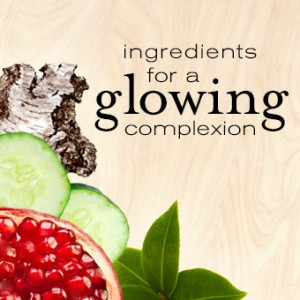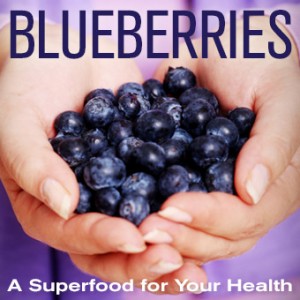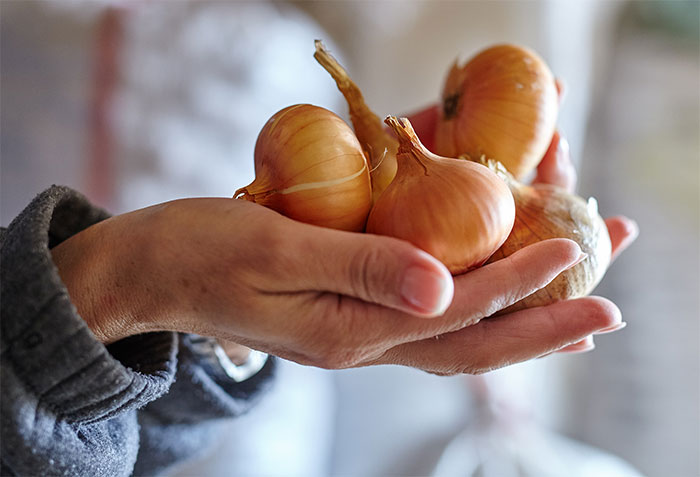This long (sometimes round), fleshy, and purple veggie is often one of the last options in your gourmet menu. There is a misconception that it is not as nutritious as the other much-lauded vegetables. Also, we assume that any dish that includes eggplant is going to be bland. But who says eggplants have to be boring? From ratatouille made in the romantic city of Paris to the eggplant parmesan made in the beautiful cliffside of Sicily, this vegetable is a part of many savoury dishes that people all over the world absolutely drool over. This humble vegetable has a lot to offer – it is highly nutritious, and is very effective in the treatment of diabetes, obesity, hypertension, acne, and hair loss. Read on to know more about the benefits of eggplant.
What Is Eggplant?

Scientific Name – Solanum melongena
Origin – Southern and Eastern Asia
Other Names – Baingan (Hindi), Vankaya (Telugu), Kathirikai (Tamil), Vazhuthanaga (Malayalam), Badanekai (Kannada), Ringan (Gujarati), Vaangi (Marathi), and Bengun (Bengali)
The nutritious eggplant, also called brinjal or aubergine, hails from the nightshade family of fruits and vegetables that includes potatoes, peppers, and tomatoes (the most misunderstood line of veggies).
Eggplant Nutrition Facts
What is the nutritional value of eggplant? Eggplant is rich in calcium, iron, magnesium and several other important nutrients that aid proper functioning of your body. In fact, 1 cup (or 82 gms) of eggplant consists of 11% fiber, 10% manganese, 5.4% molybdenum, 5.3% potassium, 4.5% folate, 3.5% vitamin K, 3.5% copper, 63.5% vitamin B, 3.1% tryptophan, 3% vitamin C, and 2.8% magnesium.
So this was about eggplant nutritional value. Now, lets discuss about its various types. Technically, there are seven different types eggplants. Take a look:
Japanese Eggplant – The long, thin, dark (almost black), and glossy variety from Japan is the first on this list. Japanese eggplants have a soft, creamy, melt-in-your-mouth texture after being cooked, which will make you want to include them in your special meal.
Chinese Eggplant – This variety from China is similar to the Japanese one, just longer, lighter, and less sweet. It has juicy, meaty flesh with very few seeds, making it perfect for stir-frying and sauteing. Chinese eggplants come in two varieties – Oriental Charm and Pingtung Long.
Graffiti Eggplant – You guessed it right! This distinctively beautiful variety has got its name due to the striped and scattered markings on its skin. Grafitti eggplants have really thin peels and small seeds and are available in all sizes. Good for baking, stewing, and roasting, this type doesn’t need to be peeled. It is widely popular throughout the globe and has a number of nicknames, including Purple Rain, Pandora Striped Rose, Shooting Stars, Fairytale, and Listada De Gandia.
Bianca Eggplant – This Italian variety is round and huge with a light purple and white skin. It has a thoroughly creamy and sweet taste, making it perfect for stuffing and making gravy.
Tango Eggplant – This is a special white species. It is shaped like an egg or a pear. It has a thick skin and a tender and creamy flesh. The tango turns yellow after harvesting and becomes stronger and firmer.
Santana Eggplant – The Italian variety that is popular for making the Turkish delicacy baba ghanoush. It is dark purple and is shaped like a tear drop. It is tender and absolutely perfect for a quick grill roast.
Thai Eggplant – This golf ball-sized Thai veggie is bitter to taste and requires seed removal. Though available in a number of colors, this variety is particularly known for its light green tint with white/yellow stripes.
Trivia: Botanically, brinjal is a fruit (a berry), not a vegetable. It grows on vines, just like tomatoes. For cooking purposes, it is considered a vegetable.
Eggplant is rich in nutrients that can work wonders on your skin. Apart from making your skin soft and smooth, it can also help reduce the signs of aging. Read on to know more eggplant benefits for your skin.
1. Provides Flawless Skin

Eggplants are rich in minerals, vitamins, and dietary fiber. This keeps your system clean from within, which makes your skin flawless (1).
2. Imparts Instant Glow
Is constant exposure to the sun making your skin dull and lifeless? No worries, this wonder veggie has a solution for all.
Eggplants have a good amount of water content (2). This helps to keep your body and skin well hydrated. The minerals and vitamins also impart a clear and smooth tone. Include this wonderful vegetable in your diet, and make your skin soft and glowing.
3. Keeps Your Skin Soft And Supple
Your skin tends to get dry, especially during winters. The cold weather strips the natural moisture of the skin, making it dry and itchy.
No worries, eggplant is here to help you. Its water content can hydrate your skin and make it soft and supple.
Use this mask on your face and neck to keep your skin hydrated most of the day:
What You Need
50 grams shredded eggplant
2 tablespoons aloe juice
1 teaspoon organic honey
What You Need To Do
Mix the ingredients until a smooth paste is formed.
This mask needs to be applied in two stages. Firstly, apply a portion of this paste on your clean face and let it get absorbed well. Then, apply the rest and leave it on for 15 to 20 minutes.
Wipe it off using a clean cotton ball.
Wash your face with warm water and rub a piece of cosmetic ice on it for a few seconds. Let it air-dry.
Finish it off by applying your trusted moisturizer.
You can use this mask twice a week.
4. Promotes Anti-aging

The dream of looking younger than your age can be easily achieved with the help of kitchen ingredients like eggplants. And yes, don’t peel that skin off or char it and throw away. The skin of the eggplant has a lot of anthocyanins, and these antioxidants act as anti-aging agents (3).
5. Cures Actinic Keratosis
Don’t we all love to bask in the sun during the cold months? It makes us feel warm and infuses the essential vitamin D in our bodies. But, as they say, excess of everything is bad – too much exposure to the harmful sunrays can wreak havoc on our skin, resulting in scaly and red patches. This condition is also called Actinic Keratosis.
Eggplant is rich in phytonutrients that are effective in soothing your skin (4). It works exceptionally well when used in combination with apple cider vinegar (ACV).
Here’s how you can make your own eggplant cream:
What You Need
1 cup minced eggplant
1 ½ cup ACV
What You Need To Do
Put the minced eggplant in a jar and pour ACV over it.
Place this jar in your refrigerator and let it stay for at least three days until the vinegar has darkened.
Your cream is ready to use. Just dab a cotton ball in it and apply on the affected area several times a day.
Hair Benefits Of Eggplant
Eggplants can be an unpopular choice for hair masks, but that doesn’t make them any less effective. Read on to know why and how to use eggplants to enhance hair health.
6. Makes Your Hair Stronger

Since eggplant has a high water content, it helps nourish your scalp from within, ensuring stronger roots.
Simply mince a small eggplant and rub your scalp with it for 10-15 minutes. Wash it off with lukewarm water and a mild shampoo. You can repeat this process once a week to get the desired results.
7. Helps Keep Our Scalp Healthy
This colorful vegetable is packed with a good amount of minerals and vitamins that nourish your scalp and keep it healthy. Hence, it keeps scalp-related problems, including dandruff, itchiness, and scalp diseases, at bay.
Use the hair mask below moisturize your scalp.
What You Need
1 eggplant
1/2 cucumber
1/2 avocado
1/3 cup sour cream
What You Need To Do
Blend all the ingredients until a smooth paste is formed.
Apply this paste evenly to your hair and scalp and leave it on for half an hour.
Wash it off using a mild shampoo and lukewarm water.
You can use this mask once a week for smoother and prettier hair.
8. Promotes Hair Growth
This is one of the surprising brinjal benefits. Losing several hair strands every day can be really heartbreaking. And purchasing those costly hair products that promise the moon isn’t a feasible option always.
Don’t worry – you have eggplant, the true ‘garden egg’.
Eggplants have enzymes that help stimulate the follicles of your hair, which enhances hair growth.
9. Improves Hair Texture
People with rough and dry hair should eat more eggplants. They impart a healthy shine to your hair and improve its overall texture as well.
Health Benefits Of Eggplants
“The happiest omen for a New Year is first Mount Fuji, then the falcon, and lastly eggplant.”
This ancient Japanese proverb simply states how culturally strong the eggplant is to be included in one of the happy omens. Many other eras and countries have also quoted the importance of this particular veggie.
In this section, we’ll enlighten you about the wonderful eggplant health benefits (umm..berry). Take a look:
10. Helps Control Diabetes
This simple veggie can mitigate the threat of diabetes – one of the killer diseases.
Eggplant is a rich source of fiber and is low in soluble carbohydrates (5). It can help regulate the blood sugar levels and control the absorption of glucose. This makes it the best option for people who have type 2 diabetes.
11. Good For Cardiovascular Health
Having eggplant regularly can enhance your heart health.
It helps to lower the cholesterol levels and stabilize your blood pressure. All this, in turn, reduces the risk of heart diseases. Your body is also well-hydrated, thanks to the potassium content present in this vegetable (6). This ensures there is no retention of fluids, which prevents coronary heart diseases.
12. Boosts Memory
Include eggplants in your diet to sharpen your memory.
Eggplant contains phytonutrients that protect the cell membranes from damage and facilitate message transfer from one cell to another, thus preserving the memory function (7). But, keep in mind these essential nutrients are present in the skin of the veggie, so think before you discard the peel.
13. Removes Excess Iron From The Body
Nasunin present in eggplant helps remove excess iron from the body (8). It scavenges the free radicals in your body and protects the cells from damage.
14. Facilitates Weight Loss

Are you looking for a healthier alternative to lose weight – one that doesn’t require you to starve? Go for this colorful wonder!
Wondering, how eggplant for weight loss is beneficial? Well, eggplant has high water content and very less calories (just 35 calories per cup) (9). This makes it very ideal for people who want to reduce weight. The spongy texture of the vegetable facilitates these characteristics. Hence, you must consume eggplant in its natural form as much as possible. The vegetable also has high fiber content, which makes you feel full.
15. Aids Digestion
Do you experience constant troubles with your stomach? Why don’t you try the nutritious eggplant?
The high dietary fiber content of brinjal keeps your digestive system healthy (10). It adds bulk to your stool, making it easy to pass through the digestive tract. Fiber stimulates peristaltic motion, controlling the contraction of the stomach and intestine muscles. It also helps control the secretion of gastric juices, which increases the absorption of nutrients in the body.
16. Helps Quit Smoking
Giving up smoking is a daunting task. We all have that friend who has tried to quit smoking but has been unsuccessful because the nicotine fix is just too addictive. Did you ever imagine that a vegetable can help you kick the butt?
According to a study published in 1993, eggplant has the highest level of nicotine when compared to every other vegetable (11). Eggplant has nicotinic acid, also known as vitamin PP. This vitamin reduces nicotine dependence and helps those who want to quit smoking.
17. Has Antibacterial Properties
18. Reduces Blood Pressure And Stress Levels

Blood pressure and stress are not uncommon anymore and can happen to anyone – even teenagers. The situation is grave, and medicines cannot always help.
Eggplants are rich in bioflavonoids that are known to keep the blood pressure and stress levels under control (13).
19. Prevents Cancer
Research has found that eggplant is a rich source of phenolic compounds, which strengthen our body’s defense system. It is also rich in vitamin C – another contributor to a better immune system that helps stimulate the production and working of the WBCs. These two, along with manganese, nasunin (an organic antioxidant exclusive to eggplant), and chlorogenic acid, help inhibit the carcinogenic cells by scavenging the free radicals (14).
20. Helps Prevent Cognitive Disorders
Eggplant can help those suffering from cognitive disorders.
Free radicals lurking around in the brain may be responsible for neural degeneration, Alzheimer’s, and dementia. Nasuninis a potent antioxidant that is known to inhibit detrimental behavior in the brain by scavenging these free radicals.
21. Enhances Bone Health
Eggplant helps cure a number of bone-related disorders, including bone degradation and osteoporosis.
This incredible veggie has phenolic compounds as well as essential nutrients like iron, calcium, and potassium. All these assist in providing stronger and healthier bones.
22. Treats Anemia

The world has seen an unbelievable surge in the number of anemic people over the last two decades, reaching to a whopping 1.62 billion as per the WHO database (15).
As we know, iron deficiency is one of the root causes of anemia, which has symptoms such as headaches, depression, weakness, and cognitive malfunction. Therefore, to combat anemia, doctors suggest a diet that is rich in iron. Eggplant contains around 0.2 mg of iron per 100 grams. This nutritional vegetable is also rich in copper (about 0.173 mg in 100 grams), another essential component that encourages the formation of RBCs. These two minerals work together effectively to aid the proper production and distribution of RBCs, thus boosting the energy and hemoglobin levels.
23. Prevents Congenital Disorders
The folate and folic acid present in eggplant promote proper fetus growth, making it an essential part of an expecting mother’s diet (16). It also helps protect infants from the chances of neural tube defects and aids their brain development.
So, for a healthy pregnancy, make it a habit to have eggplant daily.
24. Lowers Cholesterol Levels
Many studies have concluded that having eggplants can help reduce the bad cholesterol (LDL) levels. Nasunin, along with terpene phytonutrients, helps relax the walls of the blood vessels, improving the blood flow in the body.
25. Provides Instant Energy
Feeling drained after a long workout session? Eggplant can help replenish that lost energy.
Eggplant contains water-soluble niacin (vitamin B3) that helps the body break down proteins, carbohydrates, and fats to produce energy (17). This vitamin also directly participates in the production of cholesterol and fatty acids.
26. Strengthens The Immune System
Despite not being particularly high in vitamin C, eggplant can strengthen your immune system due to the presence of powerful phytonutrients and antioxidants. These elements have antimicrobial and antiviral properties, which shield your body from foreign body invasion. They also help scavenge harmful free radicals, protecting your body and cells from severe damage.
27. Is Good For Babies

Eggplant is rich in vitamins A and K, calcium, and folate, which make it an ideal food item for your infants. It also contains dietary fiber that helps regularize the bowel movements.
Eggplants can be introduced to infants aged between 8-10 months, preferably without skin at first.
28. Enhances Liver Health
Eggplant is the perfect choice for those suffering from liver disorders. It helps increase the production of bile in the liver, dissolving extra fat and preventing the chances of liver failure. Having eggplants can also help reduce liver pain.
29. Treats Acid Reflux
Have you ever experienced bloating after a spicy meal? Or, did you ever experience chest pain after you have had a large meal? Chances are you might be suffering from acid reflux.
Thankfully, eggplant is touted to be one of the best natural remedies to cure acid reflux. Since it is alkaline in nature, it helps neutralize the extra acid in the stomach, relieving heartburn and acidity.
30. Relieves Constipation
This colorful vegetable can reduce body heat (18). It also helps eliminate the possibilities of food stagnation in the large intestine by ensuring proper peristalsis movement.
Additionally, eggplants avoid the production of heat toxins in the system that occurs due to the old, undigested food.
Best Skin Hospital in Lucknow
Best Dermatologist in Lucknow.
source






















